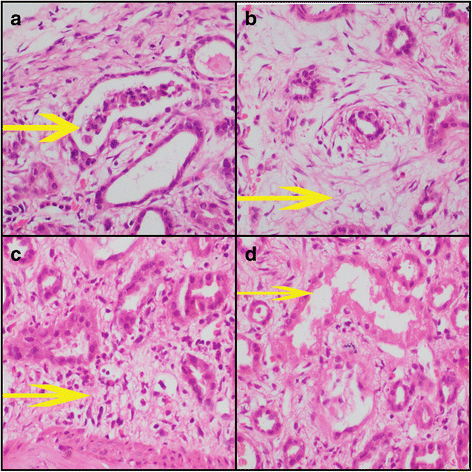A case report of zinc phosphide poisoning: complicated by acute renal failure and tubulo interstitial nephritis
- PMID: 28545504
- PMCID: PMC5445288
- DOI: 10.1186/s40360-017-0144-7
A case report of zinc phosphide poisoning: complicated by acute renal failure and tubulo interstitial nephritis
Abstract
Background: Run Rat® is a rodenticide widely used against small mammals. It comprises of a minimum of 32% zinc phosphide which is highly toxic in acute exposures to humans. It may be consumed accidentally or intentionally. It enters the body via skin, respiratory and gastrointestinal tracts. Zinc phosphide is hydrolyzed by the gastric acid and is transformed into phosphine gas. Phosphine is a respiratory toxin that inhibits cytochrome C oxidase system resulting in renal failure and liver failure.
Case presentation: A 35 year old Sri Lankan female presented following ingestion of 2.5 g of Run Rat®, which is a branded preparation of zinc phosphide, resulting in 61 mg/kg poison load. She developed severe acute kidney injury with acute tubular necrosis, subnephrotic ranged proteinuria and tubulointerstitial nephritis for which she underwent haemodialysis three times along with other measures of resuscitation. She also developed elevated liver enzymes with hyperblirubinaemia, hypoalbuminaemia, acute pancreatitis and mild myocarditis. She improved with supportive therapy over a period of 3 weeks.
Conclusion: Run Rat® is a commonly used rodenticide and the toxic effects are mediated through conversion of phosphide to phosphine gas. The majority of the deaths had occurred in the first 12 to 24 h and the main causes identified are refractory hypotension and arrhythmias. The late deaths (beyond 24 h) had been commonly due to adult respiratory distress syndrome, liver and renal failure. The outcome is poorer with delayed presentation, development of coagulopathy, hyperglycaemia and multiorgan failure with elevated liver enzymes. In our patient, Zinc phosphide poisoning caused severe acute kidney injury, abnormal liver profile, pancreatitis and possible myocarditis. The patient improved with repeated haemodialysis. The renal biopsy revealed acute tubulointerstitial nephritis with acute tubular necrosis. In tropical countries, the rural population engaged in agriculture has easier access to the compound, as it is available at a lower cost. Furthermore, the lack of an antidote and advanced resuscitative measures such as inotropic supportive therapy and renal replacement facilities at most of the peripheral hospitals pose a major challenge in providing timely interventions to prevent deaths.
Keywords: Renal failure; Run Rat® poisoning; Tubulointerstitial nephritis; Zinc phosphide.
Figures
Similar articles
-
Aluminium and zinc phosphide poisoning.Clin Toxicol (Phila). 2009 Feb;47(2):89-100. doi: 10.1080/15563650802520675. Clin Toxicol (Phila). 2009. PMID: 19280425 Review.
-
[Case Report: Zinc phosphide poisoning after ingestion of a rodentizide in suicidal intention].Anasthesiol Intensivmed Notfallmed Schmerzther. 2016 Jan;51(1):24-7. doi: 10.1055/s-0041-110001. Epub 2016 Feb 9. Anasthesiol Intensivmed Notfallmed Schmerzther. 2016. PMID: 26859470 German.
-
Acute hepatic steatosis: a helpful diagnostic feature in metallic phosphide-poisoned horses.J Vet Diagn Invest. 2018 Mar;30(2):280-285. doi: 10.1177/1040638717746707. Epub 2017 Dec 4. J Vet Diagn Invest. 2018. PMID: 29202675 Free PMC article.
-
Survival after aluminum phosphide poisoning with cardiotoxicity: a case report.J Med Case Rep. 2024 Dec 30;18(1):614. doi: 10.1186/s13256-024-04988-0. J Med Case Rep. 2024. PMID: 39734185 Free PMC article.
-
Zinc phosphide ingestion: a case report and review.Vet Hum Toxicol. 1989 Dec;31(6):559-62. Vet Hum Toxicol. 1989. PMID: 2575817 Review.
Cited by
-
Acute pesticide poisoning amongst adolescent girls and women in northern Tanzania.BMC Public Health. 2020 Mar 6;20(1):303. doi: 10.1186/s12889-020-8374-9. BMC Public Health. 2020. PMID: 32156268 Free PMC article.
-
A Case of Zinc Phosphide-Induced Acute Fulminant Liver Failure.Cureus. 2023 Nov 8;15(11):e48485. doi: 10.7759/cureus.48485. eCollection 2023 Nov. Cureus. 2023. PMID: 38073965 Free PMC article.
-
Acute liver failure secondary to yellow phosphorus rodenticide poisoning: Outcomes at a center with dedicated liver intensive care and transplant unit.J Clin Exp Hepatol. 2020 Oct 8;11(4):424-34. doi: 10.1016/j.jceh.2020.09.010. Online ahead of print. J Clin Exp Hepatol. 2020. PMID: 33052182 Free PMC article.
-
A systematic review of pesticide exposure, associated risks, and long-term human health impacts.Toxicol Rep. 2024 Nov 30;13:101840. doi: 10.1016/j.toxrep.2024.101840. eCollection 2024 Dec. Toxicol Rep. 2024. PMID: 39717852 Free PMC article. Review.
-
A case report on zinc phosphide ingestion resulting to acute pancreatitis.Ann Med Surg (Lond). 2022 May 24;78:103859. doi: 10.1016/j.amsu.2022.103859. eCollection 2022 Jun. Ann Med Surg (Lond). 2022. PMID: 35734667 Free PMC article.
References
-
- ZINC PHOSPHIDE - National Library of Medicine HSDB Database [Internet]. Toxnet.nlm.nih.gov. 2017 [cited 24 April 2017]. Available from: https://toxnet.nlm.nih.gov/cgi-bin/sis/search/a?dbs+hsdb:@term+@DOCNO+1059
-
- Bhalla A, Singh S. Aluminum phosphide poisoning. J Mahatma Gandhi Instit Med Sci. 2015;20(1):15. doi: 10.4103/0971-9903.151721. - DOI
Publication types
MeSH terms
Substances
LinkOut - more resources
Full Text Sources
Other Literature Sources


